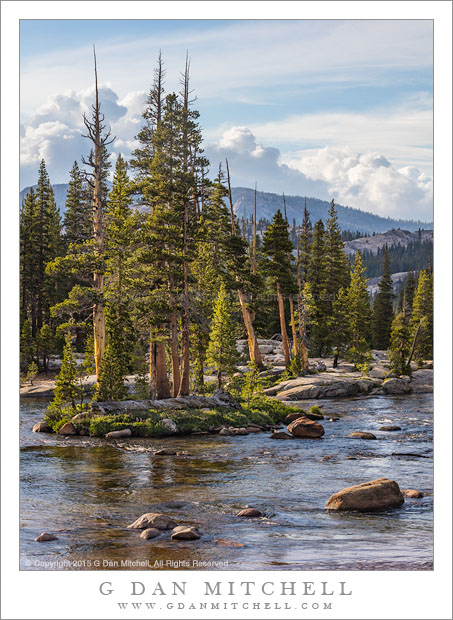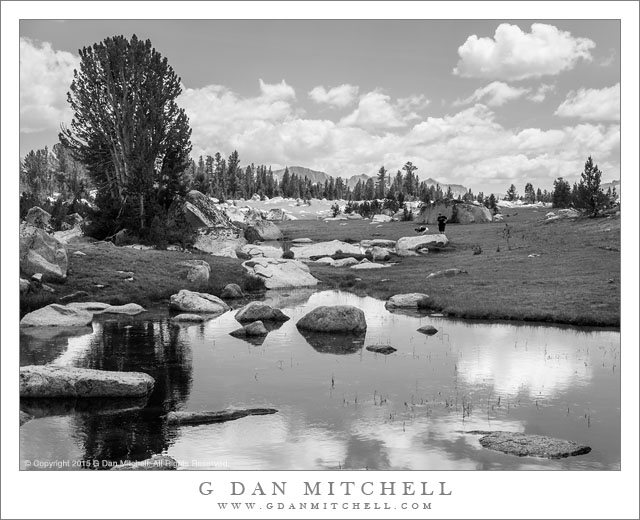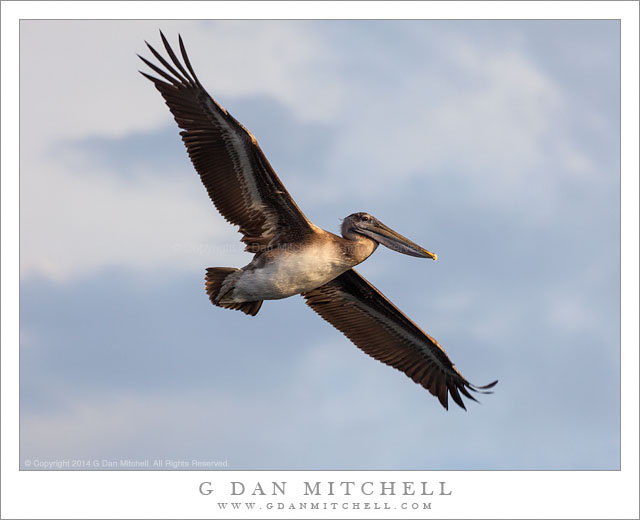(“A Photograph Exposed” is a series exploring some of my photographs in greater detail. A companion article looks at post processing issues related to the same subject.)
Landscape photographs depend on many things: good fortune to be in the right place at the right time, experience that helps predict when and where to find “right place at the right time,” sensitivity and experience that help you recognize the potential in a scene, being able to think beyond the intrinsic beauty of a scene to consideration of how it might make a photograph, an intuitive sense of “what is right” visually, the ability to apply some objective thought on top of the intuition, and other things in a list that is too long to recount completely.
I would like to share some of the thinking that went into photographing one particular scene earlier this summer.

Back in mid-July I experienced a special evening in the Tuolumne Meadows Sierra Nevada of Yosemite National Park. It was special for many reasons — some photographic and some not, but even the non-photographic reasons helped put my mind and my senses in the right place to make photographs. I had arrived and set up camp, taken care of camp chores, and finally headed out for late-afternoon and evening photography. I pulled off the road to take a look at a possible subject, and by remarkable coincidence found myself parked behind two good friends who were there for much the same reason. We joined forces and headed of to a nearby area that seemed promising. In an even more remarkable coincidence, partway there two more friends showed up, also there for the same purpose! Something about hiking off into a beautiful landscape with like-minded friends seems to heighten my awareness.
We followed the Tuolumne River and soon its angle of descent began to increase slightly as its channel narrowed and became more rocky. Continue reading A Photograph Exposed: One Subject, Two Compositions




